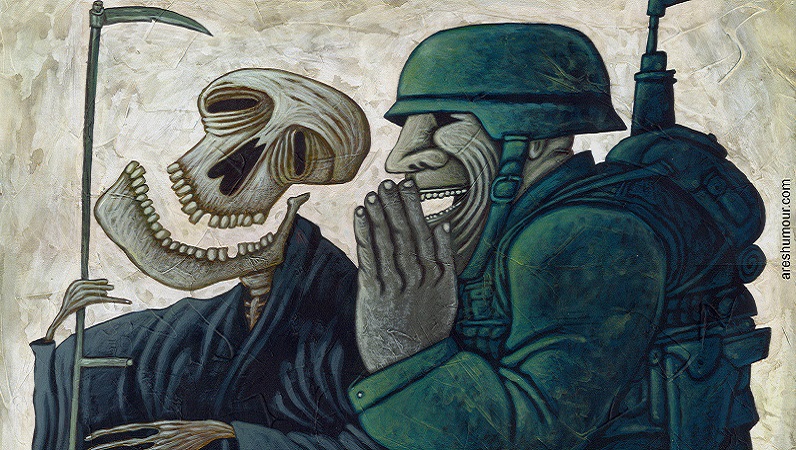NB: this topic is discussed at greater length, with more details on the methodology used to obtain an estimate, in an occasional paper now available on the WPF website.
The question sounds straightforward, but the answer is anything but. Available data on the financial value of the international arms trade is extremely poor, such that even estimating a figure for the total value of the legal world trade in arms is fraught with difficulties. Breaking this down in more detail, in terms of buyers and sellers, is even more problematic. For a phenomenon so significant to international relations, it is highly unfortunate that the data is so poor.
International data sources
Several organizations produce data on the international arms trade: but as the people who produce the data would likely be the first to admit, there are serious problems with all of them. Estimates of the total financial value of the international arms trade in 2014 range from $54.1 billion to $188 billion. The surprising thing is that both these extreme estimates come from different parts of the US Government: The Congressional Research Service (CRS)’s annual Conventional Arms Transfers to Developing Nations, and the State Department’s World Military Expenditures and Arms Transfers (WMEAT).
What is the main reason for this enormous difference? Their figures for the US’s own arms exports! Specifically, the CRS only includes transfers under the government-to-government Foreign Military Sales (FMS) program, excluding direct sales from US companies to foreign buyers under the Direct Commercial Sales (DCS) program. WMEAT includes DCS transfers, but their figure for such transfers is a huge overestimate, based on a methodology that includes transfers to US forces overseas, which form a substantial majority of such transfers. We will look more closely at the problems with DCS data later. There are other problems with the CRS and WMEAT data: both give figures for some EU member states’ exports that are substantially lower than the official figures provided by these countries as part of their national arms export reporting. Since the sources used by CRS and WMEAT are not transparent, there is no way to assess if their reasons for discounting these official sources are valid.
The most widely cited source, and the one generally accepted as most authoritative, is the SIPRI Arms Transfers Database, which provides detailed qualitative and quantitative information on international arms transfers. According to the most recent data release by SIPRI, the total volume of the trade in major conventional weapons in 2016 was 31,075 million.[1]
Million dollars? No, million “Trade Indicator Value” (TIV) units. What is a TIV unit? For full details, you should read the SIPRI sources and methods. Basically, it is an attempt to assign a similar value to similar items of military equipment, regardless of the price paid; the reason SIPRI does this is because the financial data is so bad. For US systems, the TIV is linked to their unit production cost, while other systems are given a TIV based on the nearest equivalent US system For example, one of the most advanced Russian combat aircraft, the Sukhoi Su-30MK, is assigned the same value as a US F-35 Joint Strike Fighter. The quantitative TIV measure is based on a comprehensive database of specific arms deals and deliveries, from a myriad of sources, including government, arms companies, and general and specialist media.
This is a well-tried system, which aims to give an accurate measure of the volume of international arms transfers, including between specific pairs of countries. But it does not give us a financial measure, and in fact the TIV values often do not correlate very well with financial values, where these are known. The TIV measure can do what the name describes – it can measure trends in the international arms trade, and can also provide comparisons between; but the problem with the TIV numbers is that they can’t be meaningfully compared to anything else.
The poor quality of available data is not simply about secrecy, though that can play a part. It’s about whether anyone is collecting the data in the first place. Part of the problem is that “arms” or “military equipment” do not constitute a single “Standard International Trade Classification” (SITC), or any combination of SITC categories—the classification system used worldwide by customs organizations, from which national and international trade statistics are compiled. There is a category “Arms and ammunition”, but this only captures, roughly speaking, things that go boom: guns, artillery, missiles, bombs, torpedoes, rocket launchers, etc. There is also a “Tanks and armored fighting vehicles” category. But military aircraft and ships and their subsystems are mixed in with the corresponding civilian categories, as are military electronics systems, radars, and communications systems, so important to modern military operations.
[Expand Some terminology]
[table id=2 /]
[/Expand]
National data sources
In addition to these data sources with international coverage, many countries provide reports on their national arms exports, to a greater or lesser degree of comprehensiveness, ranging from a press release with a total annual figure and some key customers, to detailed records of the value and type of equipment exported to each recipient. These national sources offer the best possibility of building an estimate of the total value of the global arms trade.
However, what information is collected will depend on a government’s interest in collecting it, and what is provided will depend on what they wish to communicate to their own citizens and the wider. There are three key types of information that may be collected and published by arms exporters,[2] each with a different purpose: information on export licenses is mostly used for assessing the way in which export controls are being applied, but typically does not reflect well what is ultimately delivered. Information on orders or contracts gives a picture of a country’s relative success in the international arms market, and their arms trading relationships with individual partners and clients. Information on deliveries, which is what we are interested in, allows the best assessment of what military equipment is actually being transferred when. National reports on arms exports by most countries that produce them, as well as EU Annual Reports that include information from all member states, are collected in the SIPRI database on national arms exports reports.
The problem is that different countries report different things. Even within the EU, although all countries are asked to submit figures on both licenses and deliveries, the UK and Germany, for example, do not provide figures on deliveries. The UK and France also provide figures on the value of orders, but not all EU countries do this, and the UK figures only break these figures down by region, not by individual recipient. License figures can be problematic: on the one hand, not all licenses lead to deliveries, so for most countries that provide figures for both, the value of licenses is generally considerably greater. On the other hand, EU figures for licenses typically cover only licenses for a single delivery of a specified quantity of equipment to a particular customer, excluding so-called open or general licenses, that allow for multiple deliveries of a type of equipment to one or more customers over a longer period of time. The UK in particular makes extensive use of such open licenses, so that UK license figures substantially underestimate the UK arms trade.
Among other major exporters, Russia reports deliveries, but the complete lack of detail makes these figures hard to assess. South Korea and Israel report only orders, again with very little detail. China provides no data at all. Then we come to the world’s number one arms trader: the United States.
(continued in part 2)
[1] This excludes small arms and light weapons (SALW), components, and most subsystems.
[2] Few if any countries provide data on the level of their arms imports.


